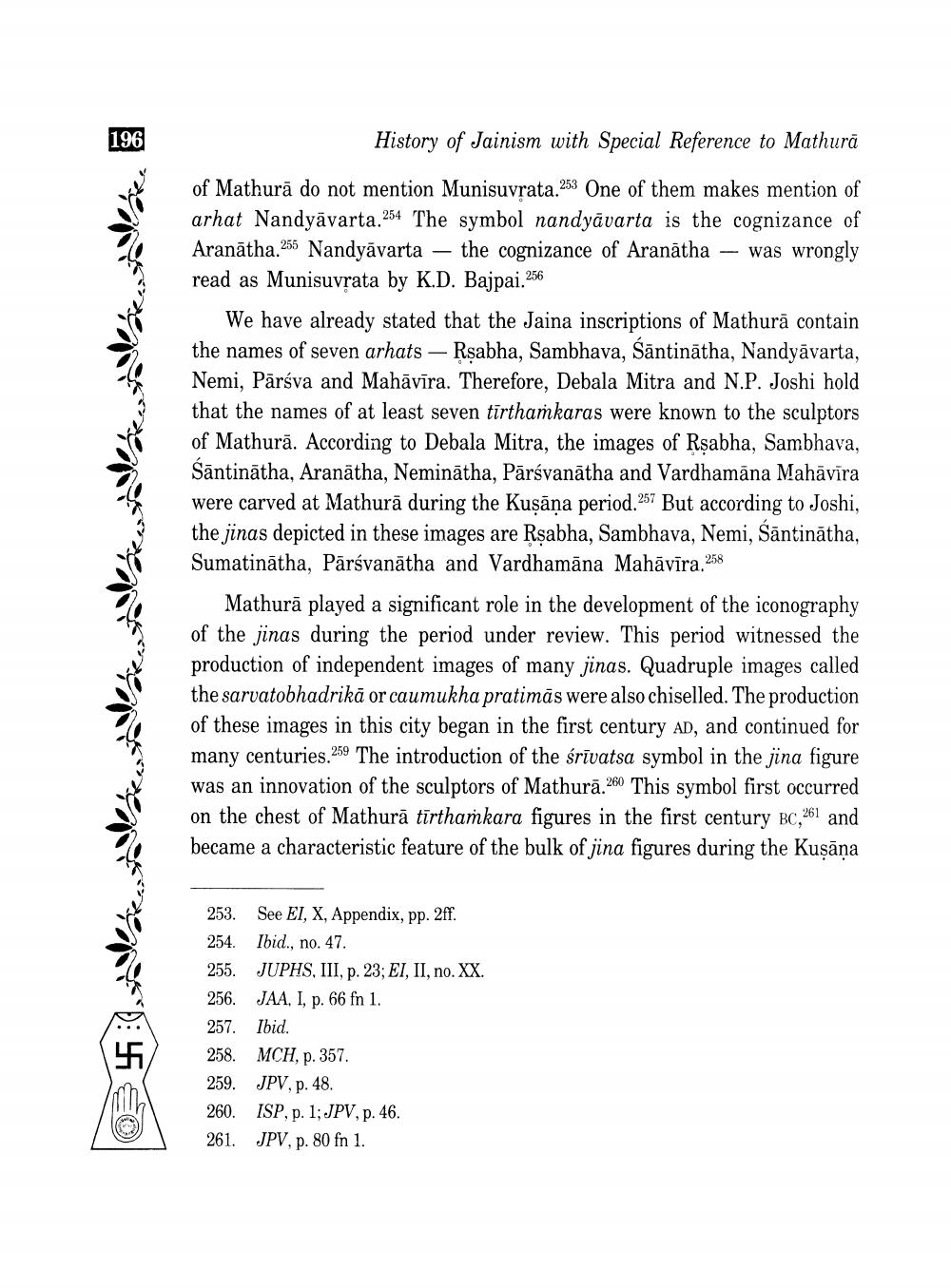________________
196
History of Jainism with Special Reference to Mathura
of Mathurā do not mention Munisuvrata.253 One of them makes mention of arhat Nandyāvarta 254 The symbol nandyāvarta is the cognizance of Aranātha.255 Nandyāvarta – the cognizance of Aranātha - was wrongly read as Munisuvrata by K.D. Bajpai.256
We have already stated that the Jaina inscriptions of Mathurā contain the names of seven arhats - Rsabha, Sambhava, śāntinātha, Nandyāvarta, Nemi, Pārśva and Mahāvīra. Therefore, Debala Mitra and N.P. Joshi hold that the names of at least seven tīrthamkaras were known to the sculptors of Mathura. According to Debala Mitra, the images of Rsabha, Sambhava, Sāntinātha, Aranātha, Neminātha, Pārsvanātha and Vardhamana Mahāvīra were carved at Mathurā during the Kusāna period.257 But according to Joshi, the jinas depicted in these images are Rsabha, Sambhava, Nemi, Sāntinātha, Sumatinātha, Pārsvanātha and Vardhamāna Mahāvīra.258
Mathurā played a significant role in the development of the iconography of the jinas during the period under review. This period witnessed the production of independent images of many jinas. Quadruple images called the sarvatobhadrikā or caumukha pratimās were also chiselled. The production of these images in this city began in the first century AD, and continued for many centuries.259 The introduction of the śrīvatsa symbol in the jina figure was an innovation of the sculptors of Mathurā.260 This symbol first occurred on the chest of Mathurā tīrthamkara figures in the first century BC,261 and became a characteristic feature of the bulk of jina figures during the Kuşāna
253. See EI, X, Appendix, pp. 2ff. 254. Ibid., no. 47. 255. JUPHS, III, p. 23; EI, II, no. XX. 256. JAA, I, p. 66 fn 1. 257. Ibid. 258. MCH, p. 357. 259. JPV, p. 48. 260. ISP, p. 1; JPV, p. 46. 261. JPV, p. 80 fn 1.




